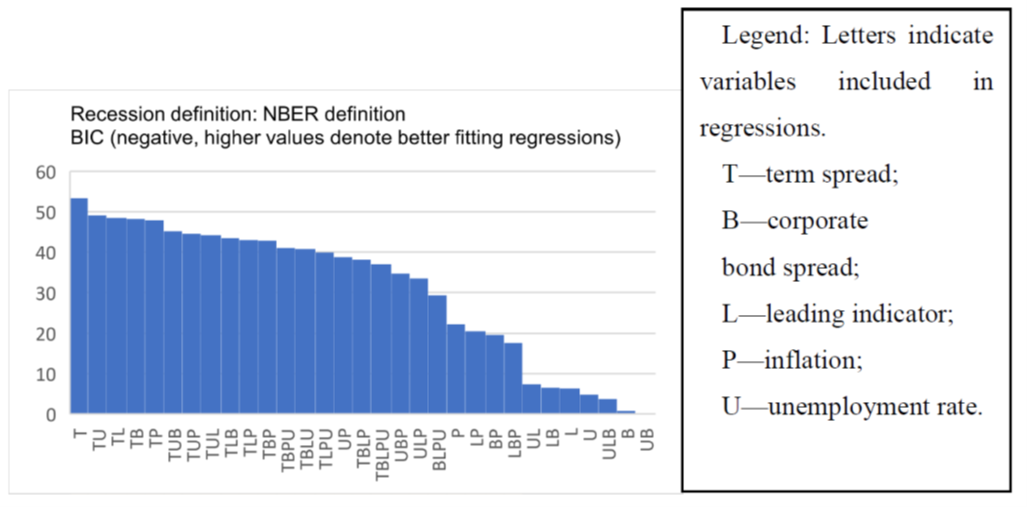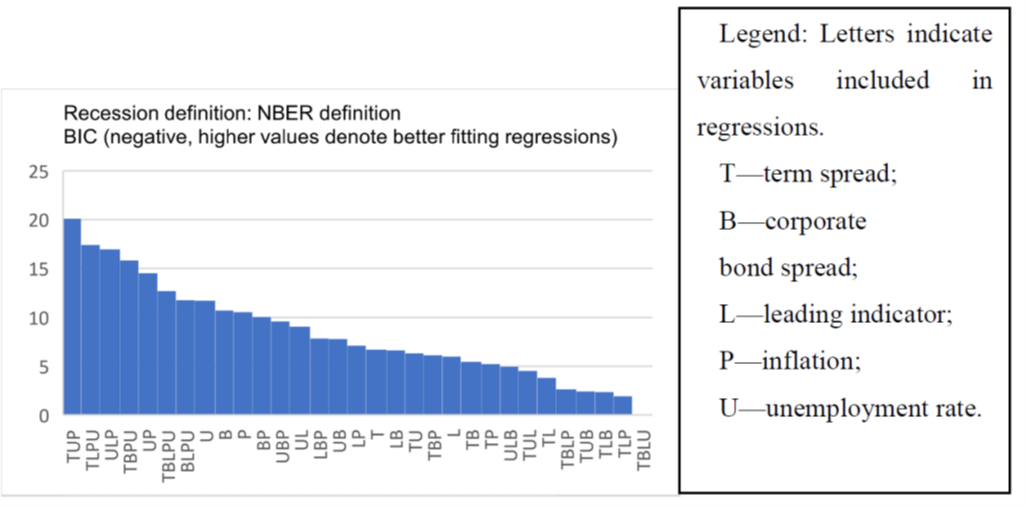Different Recession Predictors At Different Horizons
Michael Kiley (FRB) has recently circulated a working paper showing that various indicators have greater predictive power at different horizons. Other papers have shown this for different term spreads, credit spreads, foreign term spreads; in this case, Kiley shows unemployment and inflation have more predictive power at long horizons than short.
For four quarters ahead, a term spread works best.
(Click on image to enlarge)

Source: Kiley (2023), Fig 4, bottom panel. T is 10yr-Fed funds term spread, U is unemployment rate, and P is PCE y/y inflation rate.
For a recession in the four quarters ahead of four quarters horizon, a specification including inflation and unemployment works best.
(Click on image to enlarge)

Source: Kiley (2023), Fig 5, bottom panel. T is 10yr-Fed funds term spread, U is unemployment rate, and P is PCE y/y inflation rate.
Note that Kiley also considered predictive power where recessions are defined as large increases in the unemployment rate, and large decreases in the per capita GDP. Here, I’ve focused on NBER defined recessions.
What do Kiley’s results imply for the current situation (i.e., do the current levels of inflation and unemployment imply a different estimated recession probability than using a term spread alone)? I do probit regressions on term spread at 12 months horizons, and term spread plus PCE inflation plus unemployment for 18 and 24 months ahead using data up to January 2023 (I assume UE rises to 3.6% and inflation is as indicated by the Cleveland Fed nowcast).
(Click on image to enlarge)

Figure 3: Implied recession probabilities using term spread at 12 month horizon (blue), at 18 months using term spread, unemployment rate, inflation rate (tan), at 24 months using term spread, unemployment rate, inflation rate (green). NBER defined peak-to-trough recession dates shaded gray. Source: NBER, author’s calculations.
These probabilities break the 50% threshold around 2023M04. (Note that I’m using a slightly different specification, of at 12 months, rather than within 12 months).
More By This Author:
IMF WEO On US GDP
China GDP And Forecasts
Term Spread Recession Forecasts For January 2024



